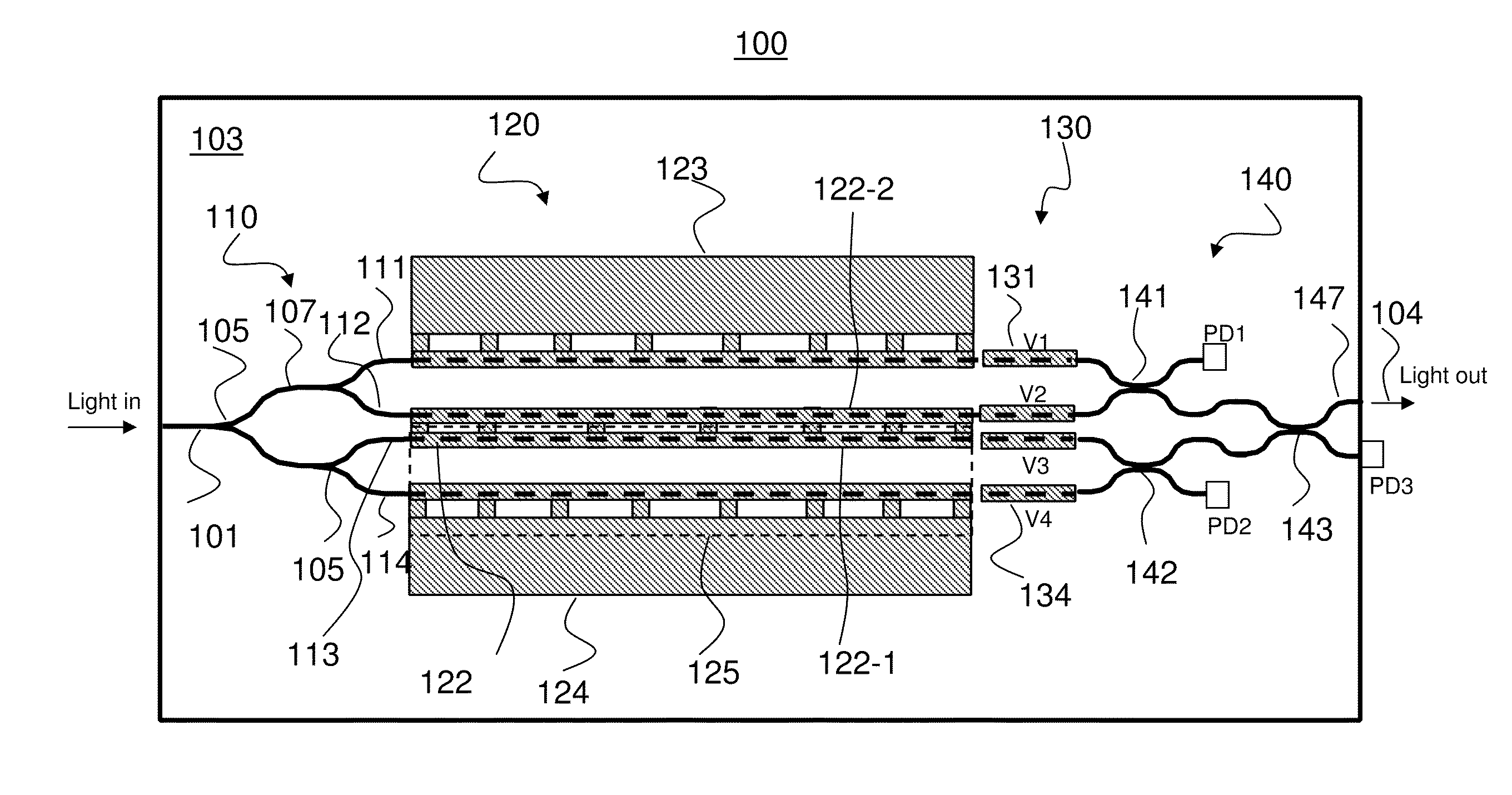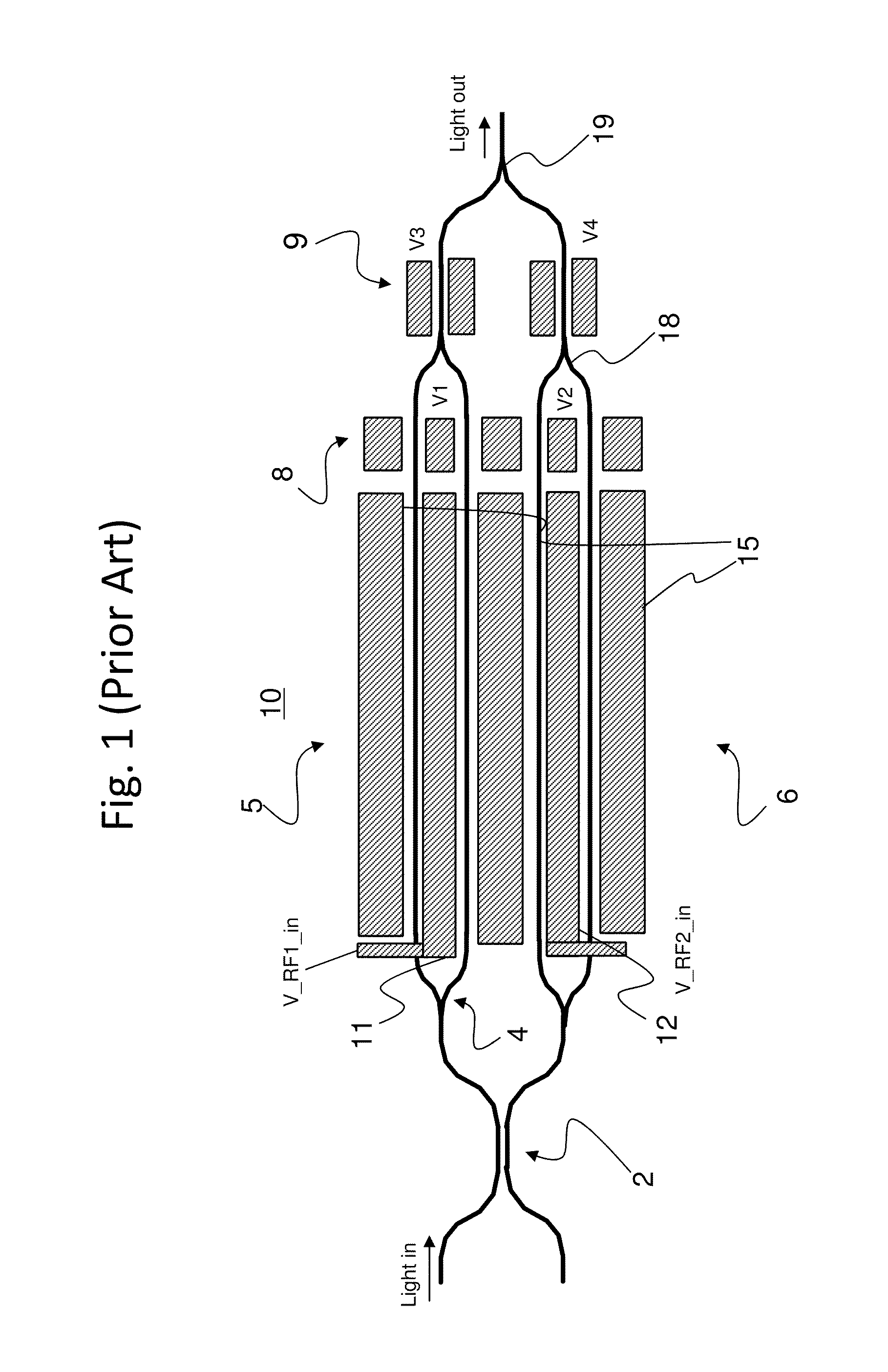Optical waveguide modulator
a modulator and optical waveguide technology, applied in non-linear optics, instruments, optics, etc., can solve the problems of non-linear distortion of the modulation of the output optical signal in conventional mz modulators, and distortion products that are problematic for systems that transmit analog signals or multi-band transmission. , to achieve the effect of suppressing the noise of relative intensity
- Summary
- Abstract
- Description
- Claims
- Application Information
AI Technical Summary
Benefits of technology
Problems solved by technology
Method used
Image
Examples
Embodiment Construction
[0060]With reference to FIG. 9, there is illustrated a waveguide modulator 100 according to a first exemplary embodiment of the invention. FIG. 10 shows the transfer curve for the device. Note that the highest value in the transfer curve is about 0.5, indicating about 3 dB of optical penalty. The modulator 100 includes a modulation section 120 sandwiched between an input optical splitting arrangement (OSA) 110 for splitting input light launched in an input waveguide 101 into four light portions, and an optical combining arrangement (OCA) 140 for combining the four light portions into output light that exits the modulator 100 from an output waveguide 147, all formed in or upon a substrate 103 of an electro-optic material which refractive index is sensitive to a vertical electrical field that is normal to the plane of the substrate, such as a z-cut LiNbO3 (LN). Technologies for forming optical waveguides in LiNbO3 are well known in the art and will not be described herein. The modulat...
PUM
| Property | Measurement | Unit |
|---|---|---|
| modulation strength | aaaaa | aaaaa |
| modulation strengths | aaaaa | aaaaa |
| electrical field | aaaaa | aaaaa |
Abstract
Description
Claims
Application Information
 Login to View More
Login to View More - R&D
- Intellectual Property
- Life Sciences
- Materials
- Tech Scout
- Unparalleled Data Quality
- Higher Quality Content
- 60% Fewer Hallucinations
Browse by: Latest US Patents, China's latest patents, Technical Efficacy Thesaurus, Application Domain, Technology Topic, Popular Technical Reports.
© 2025 PatSnap. All rights reserved.Legal|Privacy policy|Modern Slavery Act Transparency Statement|Sitemap|About US| Contact US: help@patsnap.com



